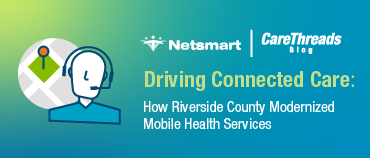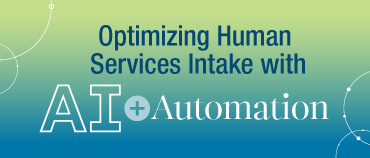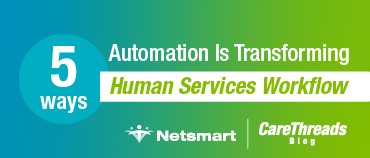Growth starts with a solid foundation. That means making sure your operations can support you as you scale to reach your goals. There’s no doubt that program expansion is tough, especially with funding complexities and workforce challenges. So how can your operations help you expand successfully to meet the demand for behavioral health services?
If anyone knows, it’s Resources for Human Development (RHD)––a $290 million nonprofit with 135 programs in 13 different states and FQHC status. Netsmart partners with RHD for technology solutions and revenue cycle management, so RHD can focus on serving individuals in the IDD, behavioral health and addictions communities. RHD’s partnership with Netsmart also allows them to bypass administrative tasks and concentrate on big-picture growth.
Recently I joined Deanna Cerwin, CFO of RHD, for a webinar. Deanna is an expert at both growth and operations, and we discussed some great tips for preparing your organization to expand. Want to learn some of our secrets to unlocking the growth equation? Check out our tips below.
Growth Tip #1: Create balance with technology and people
Adding more staff every time you add a program is a pitfall many organizations make. You want to make sure you have the staff to support the programs, but what if you could allow your existing team to support program expansion without adding more bodies? Finding the right balance between people, partnerships and technology is a great option for many organizations, as opposed to growing services and labor at a 1:1 ratio.
For example, you can easily create billing efficiencies by leveraging technology for claims management and collections. This creates efficiency without straining your payroll, and it helps your existing back-office team work at a higher level (which has the added benefit of boosting job satisfaction). Smart partnerships can catapult your productivity, which is why RHD leaves all their revenue cycle management to Netsmart. Throwing more people at the work is not going to help your bottom line. Leverage your people and staffing partnerships for tasks that require human effort and leave the rest to the technology.
Growth Tip #2: Build metrics that grow with your organization
One of the most critical pieces of the growth equation is measuring your success. If you aren’t defining what success means with data, you will have no way to measure, grow and improve. RHD is always in the process of building out new Key Performance Indicators (KPIs), and that’s a must for healthcare operations. Data will tell you where your bottlenecks are, what’s working and what needs to change. Ongoing evaluation ensures that your benchmarks align to where you are today and where you want to be tomorrow. Every successful leader uses data. If you don’t have the right technology in place to provide you with key analytics, make this a priority.
Growth Tip #3: Improve staff satisfaction by automating mundane, repetitive tasks
We touched on this in Tip #1 but it deserves a second look when it comes to job satisfaction. It’s no secret that good people are hard to find. Your staff will enjoy their jobs––and be willing to stick around––if they are challenged and inspired to grow. So how do you create this kind of culture and still get stuff done?
The right technology reduces redundancies and lessens the burden on your existing staff. (Which is a good thing, since right now hiring is hard to do). It promotes them from mundane, repetitive jobs to roles or job functions that are more rewarding. Rethink the way you look at your billers. Challenge the status quo and create a billing environment that enables your team to grow and refine their accounting, communication, technology and problem-solving talents. Giving them the tools they need to do their job better elevates performance and financial growth.
Growth Tip #4: Create a strong foundation
It’s probably obvious that you can’t grow without a strong foundation. And that’s equally true when it comes to your staff. The word “culture” is thrown around a lot, but Deanna has a unique perspective that involves both people and operations. At RHD, a strong foundation means getting the team really good at the basics, so they can be successful at their jobs. Invest in time and training to make sure the team is operating at an efficient level. That way, growth won’t turn everything upside down. Again, technology will come into play, as you automate and innovate using solutions that help people’s jobs become easier and more enjoyable. Create a strong foundation that involves knowledge transfer, culture and community. Retaining your associates will help you grow at a faster rate. Constant turnover makes it hard to lead a high performing team. Create the organizational structure you need to build upward and a culture that connects everyone to the mission.
Growth Tip #5: Master the art of project management
When you grow and scale, that means new funding sources, new revenue streams, new initiatives––new projects. Organizations often struggle because they don’t have good project management in place––even though project managers don’t typically work in behavioral health. But according to Deanna, we should all be project managers, and that’s the way she approaches new launches with her team.
When it’s time to grow any part of your organization, create a playbook. Set up committees to help launch the initiative, and make sure everyone on the team knows their roles. You might consider using best practices such as a RACI chart (Responsible, Accountable, Consulted and Informed), like RHD does. This clarifies everyone’s personal involvement in bringing the project to life. You can’t grow if every person isn’t aware of and executing on their role. Be transparent and hold your team accountable for their role in the growth of the organization.
Growth Tip #6: Build your programs with the end in sight
Supporting funding complexities from an operational standpoint can be tricky, and if you don’t have your systems configured correctly, your reimbursements will most likely suffer. If your claims are denied and your revenue lags, that’s not growth. One of Deanna’s key tips was to build out your systems with the end in sight so when the funding transitions, it is a non-event. Being able to handle the changes that often come with new programs and revenue streams will accelerate your growth even further.
So for example, think ahead when rolling out a funded program that will transition from fee-for-service to value-based care, and build those capabilities in. Again, technology is going to play a huge role. At Netsmart, when we’re managing billing or revenue cycle for a client, we configure their EHR for optimized reimbursement.
Solving for the growth equation
At the end of the day, it’s all about having the right combination of people, process and technology, and knowing when to leverage each. That’s the most important piece of the growth equation. RHD is willing to try new things, be savvy with technology, plan and measure their initiatives, and keep their eyes on the future. They don’t grow by adding more resources, but by becoming more efficient. And they always bring their back-office superstars along for the ride. The growth equation isn’t a problem you can solve overnight, but by following these tips, you can start to streamline your operations. From there, it’s only a matter of time before you can scale to serve more and more members of your community.
About the Author
Erica Gregory, Senior Vice President and General Manager of Revenue Cycle Management
As senior vice president of Revenue Cycle Management, Erica oversees all billing and back-office operations for healthcare organizations across the country. Erica is an expert in operations and business development, displaying a track record of consistent, measurable, and substantial success across healthcare and techology. Prior to joining Netsmart, Erica was an executive at Cerner for more than 10 years.








